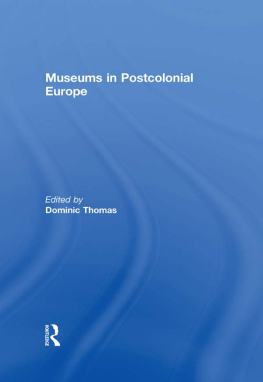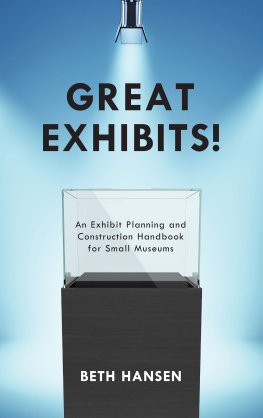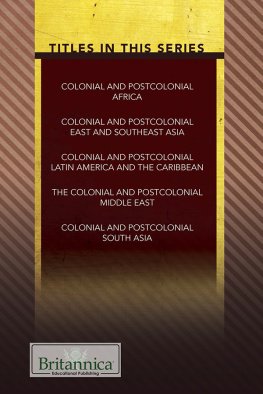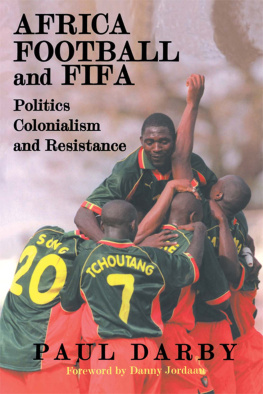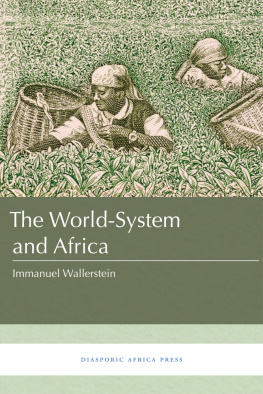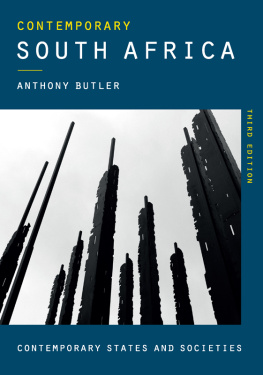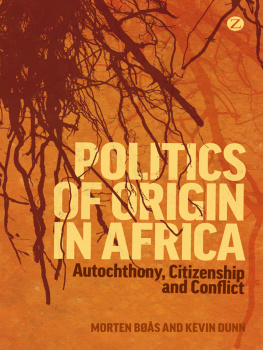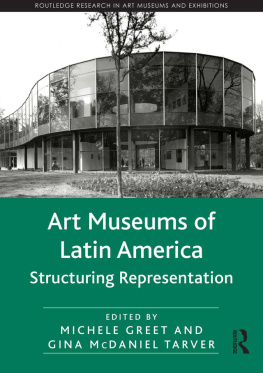

Copyright 1999
Gordon and Breach Publishers
Printed and bound by Antony Rowe Ltd, Eastbourne
Reprinted 2003
By Routledge
11 New Fetter Lane, London EC4P 4EE
Transferred to Digital Printing 2003
Routledge is an imprint of the Taylor & Francis Group
All rights reserved.
No part of this book may be reproduced or utilized in any form or by any means, electronic or mechanical, including photocopying and recording, or by any information storage or retrieval system, without permission in writing from the publisher.
Front cover: Single panel from color plate 3, Revised Into the Heart of Africa brochure. Courtesy of the Royal Ontario Museum.
Figures 2.12.7 and color plates 14 are reprinted with permission of the Royal Ontario Museum. Figure 4.1 appears through the courtesy of photographer David Maltby.
Afua Coopers poem, The Power of Racism, is reprinted in chapter III with permission of Sister Vision Press, Toronto, Ontario, Canada.
Copyright 1992 Sister Vision Press, Toronto, Ontario, Canada.
The appendix is reprinted with permission of the Coalition for the Truth about Africa.
British Library Cataloguing in Publication Data
Butler, Shelley Ruth
Contested representations : revisiting Into the heart of
Africa
1. Royal Ontario Museum Exhibitions 2. Museum exhibits Ontario Public opinion 3. Ethnology Africa Exhibitions 4. Africa Civilization Exhibitions
I. Title
069.509713541
ISBN 90-5700-522-0
ISBN 978-1-134-39013-7 (ePub)
For Norm
and
In memory of Geoff
Figures
2.1 For Crown and Empire, installation from Into the Heart of Africa.
Photo courtesy of the Royal Ontario Museum.
2.2 Lord Beresfords Encounter with a Zulu. Illustrated London News (1879), featured in The Imperial Connection installation from Into the Heart of Africa.
Courtesy of the Royal Ontario Museum.
2.3 Missionary Room installation from Into the Heart of Africa.
Photo courtesy of the Royal Ontario Museum.
2.4 Ovimbundu Compound installation from Into the Heart of Africa.
Photo courtesy of the Royal Ontario Museum.
2.5 Africa Room installation from Into the Heart of Africa.
Photo courtesy of the Royal Ontario Museum.
2.6 Advertisement for Into the Heart of Africa.
Courtesy of the Royal Ontario Museum.
2.7 Gift Shop at the end of Into the Heart of Africa.
Photo courtesy of the Royal Ontario Museum.
4.1 Protestors outside the Royal Ontario Museum.
Photo by David Maltby.
Plates
1 Asante gold necklace in the introductory room of Into the Heart of Africa.
Photo courtesy of the Royal Ontario Museum.
2 Original Into the Heart of Africa brochure.
Courtesy of the Royal Ontario Museum.
3 Revised Into the Heart of Africa brochure.
Courtesy of the Royal Ontario Museum.
4 Promotional image for Into the Heart of Africa.
Courtesy of the Royal Ontario Museum.
This book began as a masters thesis in the Dept. of Anthropology at York University in Toronto, Canada. Studying the controversy surrounding Into the Heart of Africa at the Royal Ontario Museum was a privilege; it allowed me to move among, and talk to, diverse communities. I felt this when I completed my thesis, and I am even more certain of the value of engaging with difference and relational histories as I write this from Cape Town.
I am grateful to Ken Little at York University for his resourcefulness and ability to be a spirited and engaged advisor. Margaret Rodman, also at York University, provided timely comments that helped me to clarify my arguments. Careful readings of my work were also provided by Beverley Diamond, Ted Magder and Judy Hellman. In a more ephemeral way, my work is indebted to Elvi Whittaker and Claude Bouygues, both of whom communicated a passion for critical and reflexive thought to an impressionable undergraduate at the University of British Columbia. For steadfast friendship that made writing less lonely, I thank Gina Castillo, Catherine Fenn, Cathy Hill, Mona Perusse and Wanda Taylor.
I also benefited from presenting my research at Canadian Anthropology Society (CASCA) meetings, as well as to York undergraduate classes on culture as performance and discourses of colonialism, taught by Ken Little and Teresa Holmes. Financial support for the research was provided by an Ontario Graduate Scholarship as well as by York University.
Julia Matthews and Trilby Bittle gave important assistance at the Royal Ontario Museum, both in the early and final phases of this project. My editor Monica Glina lent fine support and guidance; it was a pleasure to work with her. Finally, thank you to Norman Ravvin, whose readings improve my work and whose care and love sustain it.
Chapter I
In his widely quoted paper, The Museum: A Temple or the Forum (1971), Duncan Cameron distinguishes between two opposing museum stances. The idea of the museum as temple has its origins in the historical moment when private collections in Europe such as royal treasures and cabinets of curiosities all of which testified to Europes imperial conquestswere transferred to public hands. Until this development, which occurred a little over a century ago, collections were generally viewed as private, idiosyncratic affairs. If a scholar, for example, had a rare opportunity to view a private collection, the collection was understood to be a reflection of its collector; it spoke of the collector as a world traveler, as a wealthy person, as an eccentric, and so on. But once museums became public, collections took on a new significance. The public, or more accurately, the cultural elite, gained a sense of ownership over museum collections and began to demand that the objects be meaningful to them. In this atmosphere, museums evolved to reflect the values of the establishment that defined (and continues to define) them. For the educated classes, the museum became a temple dedicated to enshrining objects deemed significant and authentic. In short, the museum represented a standard of excellence. If the museum said that this and that was so, then it was a statement of truth (Cameron 1971: 17). In this context, the museum visitor experiences the museum as a site of stability. The museum as temple represents (in principle) shared values that the museum visitor is expected to find meaningful and edifying. At such a museum, the individuals
personal experience of life can be viewed in the context of The Works of God Through All the Ages; the Arts of Man Through All the Years
(Cameron 1971: 21)
Thus reads the inscription carved onto the monumental entrance of the Royal Ontario Museum (known as the ROM) in downtown Toronto. However, if the ROM is a quintessential Canadian example of the museum as temple, it has not, in recent years, been completely untouched by the forum. As forum, the museum becomes a site of confrontation and experimentation (Cameron 1971: 20), an apt phrase to describe the ROM during its major Into the Heart of Africa exhibit.
Into the Heart of Africa


